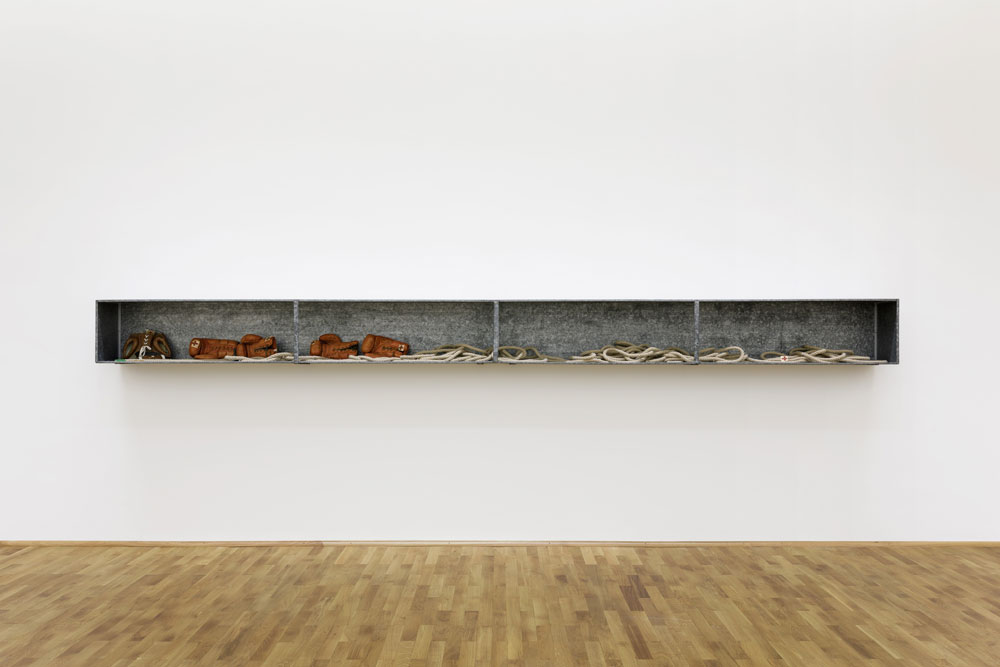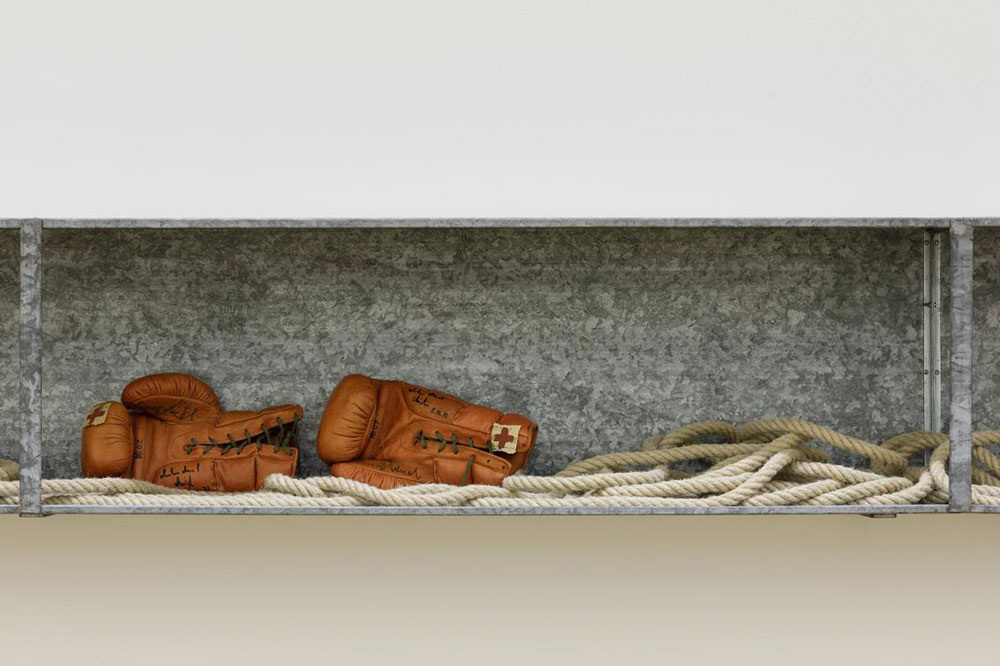ART-PRESENTATION: Joseph Beuys-Boxing Match for Direct Democracy
 In response to the shooting of a student during a demonstration protesting the visit of the Shah of Persia in 1967, Beuys founded the German Student Party. This represented his first move into politics. Beuys went on to establish several organisations, including the Organisation of Non-Voters (1970), Organisation for Direct Democracy through Referendum (1971) and the Committee for a Free University’ (1971). On 13/10/1972, Beuys was dismissed without notice from the Dusseldorf Academy of Art, but he continued to teach, fusing pedagogy into his artistic practice, and to participate in politics, running as the Green Party candidate for both European and federal parliamentary elections.
In response to the shooting of a student during a demonstration protesting the visit of the Shah of Persia in 1967, Beuys founded the German Student Party. This represented his first move into politics. Beuys went on to establish several organisations, including the Organisation of Non-Voters (1970), Organisation for Direct Democracy through Referendum (1971) and the Committee for a Free University’ (1971). On 13/10/1972, Beuys was dismissed without notice from the Dusseldorf Academy of Art, but he continued to teach, fusing pedagogy into his artistic practice, and to participate in politics, running as the Green Party candidate for both European and federal parliamentary elections.
By Dimitris Lempesis
Photo: Museum Für Moderne Kunst Archive
The Museum Für Moderne Kunst announced the acquisition of the work “Boxing Match for Direct Democracy” (1972) by Joseph Beuys for its Collection. Joseph Beuys was appointed Professor of Monumental Sculpture at the Dusseldorf Academy of Art in 1961 and participated in documenta for the first time in 1964. Beuys formulated the theory of “social sculpture” which empowered art with the ability to shape society, to which each individual could contribute, as expressed in his oft-quoted maxim, “Everyone is an artist”. In response to his dismiss from the Düsseldorf Academy of Art, Beuys set up his own Free International University for Creativity and Interdisciplinary Research. This new institution had no charges for participation, no restrictive admission policies, complete autonomy from the state and an interdisciplinary curriculum based on the idea that creativity permeates all aspects of human endeavor. On the occasion of the documenta 5 taking place in Kassel in 1972 under the artistic direction of Harald Szeemann, Beuys had moved his Düsseldorf information office of the Organization for Direct Democracy by Referendum to Kassel for 100 days. Beuys transformed an exhibition area into an educational space for films, lectures and a series of workshops on subjects such as “Nuclear Energy and Alternatives”, “Media” and “Work and Worklessness”. On the final day of documenta Beuys staged work “Boxing Match for Direct Democracy” with Abraham David Christian, a local art student. Abraham David Christian had already challenged Beuys to a boxing match during a heated argument early on in the documenta 5. The match finally took place on 8/10/1972. A classical boxing ring had been set up on a low platform at the center of the room. Christian stood for “representative government” versus Beuys’ “direct democracy”. The two opponents fought bare-chested, wearing boxing gloves. Christian also wore a leather head guard and a gumshield; Beuys remained unprotected except for the mitts. Beuys’ student, Anatol Herzfeld, refereed three rounds, after which he declared Beuys the winner, “on points for direct democracy through direct hits”. The sculpture that came out of this action “Boxing Match for Direct Democracy” consists of a display case made of zinc sheet, measuring just 40 cm in height at a width of 515 cm and holding the relics of the boxing match. It set precedents for the documenta works of Joseph Beuys, who like no other artist contributed to shaping this major art exhibition until 1986. The socio-political approach he adopted in the early 1970s can be regarded as a yardstick for all subsequent documenta exhibitions up to the very present.
Info: Museum für Moderne Kunst, Domstraße 10, Frankfurt am Main, Duration: 16/11/18-31/12/2019, Days & Hours: Tue & Thu-Sun 11:00-18:00, Wed 11:00-20:00, www.mmk.art

